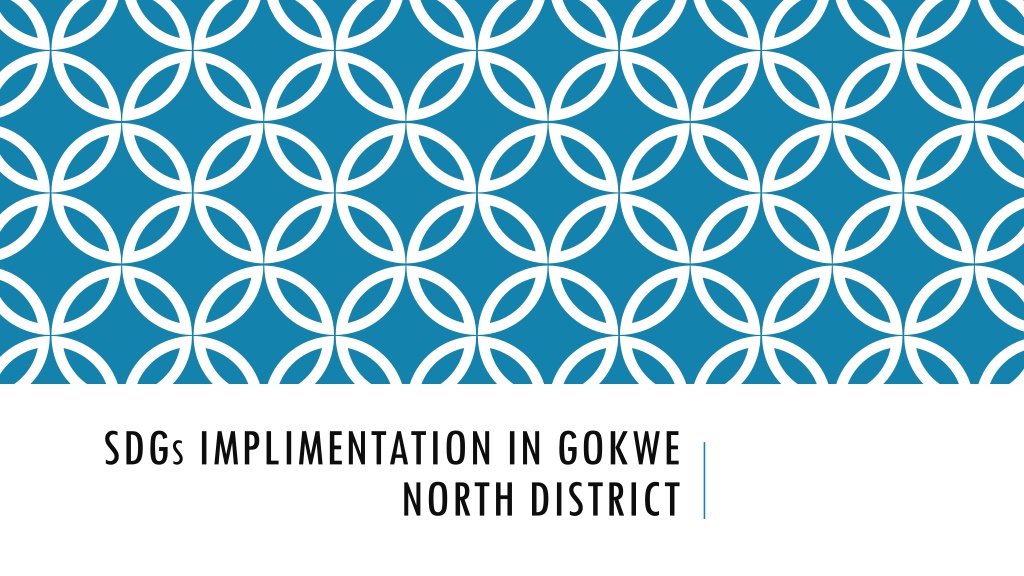Sustainable Development Goals Implementation in Gokwe North District
Gokwe North District, established in 1993, focuses on food security, social protection, infrastructure development, and health promotion to achieve sustainable socio-economic development by 2030. Challenges include low market prices for agricultural produce and insufficient government funding allocation. Integration of SDGs into local and regional plans is crucial for agenda 2030 success. Involving local communities in planning enhances SDGs implementation through ownership and inclusivity.
Download Presentation

Please find below an Image/Link to download the presentation.
The content on the website is provided AS IS for your information and personal use only. It may not be sold, licensed, or shared on other websites without obtaining consent from the author. Download presentation by click this link. If you encounter any issues during the download, it is possible that the publisher has removed the file from their server.
E N D
Presentation Transcript
SDGS IMPLIMENTATION IN GOKWE NORTH DISTRICT
BACKGROUND The District was established in 1993 after the amalgamation of Rural councils and District councils. The district has four constituencies which are Nembudziya, Gumunyu, Chireya and Kabuyuni. The District is located about 310 km from the Provincial Capital Gweru and 317 kilometers from the capital city of Zimbabwe Harare. The District lies in Agro-ecological Regions 3 -28%, 4-61% and 5-11% characterized by high temperatures ranging from 180c above 360c and medium to low rainfall amounting to +/-450mm per annum. The District covers an area of 7033.54 square kilometres. The population for the District is approximately 279,000. Our vision to become a center of sustainable socio economic development by 2030.
OUR SUCCESS STORY Our focus is on the following NDS1 priorities areas Food and nutrition security-Pfumvudza, presidential inputs and nutrition projects supported by council and development partners. SDG 2,13 Social protection- Through council supported projects, development partners and government intervention reduction of poverty, hunger and inequalities in the community is attainable. SDG1,2,5,10,11 Infrastructure and Utilities - construction of infrastructure that enhance sustainable communities schools, clinics and trafficable roads are evident in the district. SDG7,9,11 Health and wellbeing-promotion of good health by providing health facilities and clean water through mechanized boreholes and wash programs. SDG 3,5,6
OUR CHALLENGES The district is an agro based district and has faces challenge of very low market price for the agro produce poor Low disbursement of allocated potion of funds from the central government e.g. devolution and ERRP funds. Lack of prioritization on infrastructure development like dams, bridges and roads affected economic growth potential. Drought human wildlife conflict Lack of awareness on SDGs by the community +
INTEGRATION OF SDGS INTO LOCAL AND REGIONAL DEVELOPMENT PLANS The integration of strategic plans into national strategy and SDGs is key to the achievement of agenda 2030. The success of agenda 2030 begins with the VLR which feeds into the VNR which then link its strategy to the regional SDGs ensuring that no one is left behind.
THE IMPORTANCE OF VLR IN ENHANCING SDGS IMPLEMENTATION The involvement of local communities in drafting the plans towards achievement of SDGs gives sense of ownership to the people on the grassroots. This builds confidence and support in implementation of programs. Involvement of all stakeholders also gives opportunity to gender based budgeting which is also key to ensure that no one is left behind. Thank you.

 undefined
undefined


























